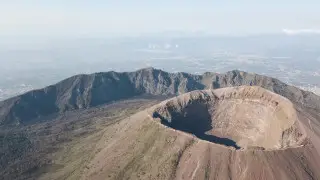Tengrinews.kz - Russian scientists have determined the exact date of the largest volcanic eruption in the last 10,000 years, citing RIA Novosti.
After analyzing tree rings from Yamal, scientists concluded that the Kikai volcano erupted in 5279 BCE. This date may serve as a marker for synchronizing the chronologies of other eruptions. The study was published in the journal Dendrochronologia.
Scientists examined three major eruptions from the past 10,000 years: Ilyinsky Volcano in Kamchatka (8,500 years ago), Mount Mazama Volcano in North America (7,600 years ago), and the Kikai Volcano in the Japanese islands (7,300 years ago). The ejecta volume of the first two volcanoes was about 150 cubic kilometers, while Kikai’s volume was 300-450 cubic kilometers.
"This is several times greater than the volume of any subsequent eruptions, including the powerful Tambora eruption in 1815," said lead researcher Rashit Hantemirov.
He added that around the same time, three significant sulfate peaks were found in the layers of the Greenland and Antarctic ice sheets. Scientists believe these are traces of the three mentioned eruptions.
"We decided to check for tree ring anomalies, which volcanologists and ice core researchers dated to these events with an accuracy of plus or minus 100 years. For this, we used semi-fossilized larch wood from Yamal, where the longest tree-ring chronology for polar regions—8,768 years—was established," Hantemirov noted.
According to him, no significant events were found for the Ilyinsky and Mazama eruptions during those periods, but near the estimated date of the Kikai eruption, a "catastrophic event" was recorded, causing a sharp decline in tree growth and the formation of abnormal tree rings with pathological resin ducts.
"This event occurred in 5279 BCE, and harsh conditions lasted for at least five more years. It is highly likely that the abnormal rings are related to the Kikai eruption," the scientist noted.
Experts add that if the eruption date is correct, the chronology of the Greenland and Antarctic ice sheets would need to be adjusted, potentially altering our understanding of climate and the natural environment.


